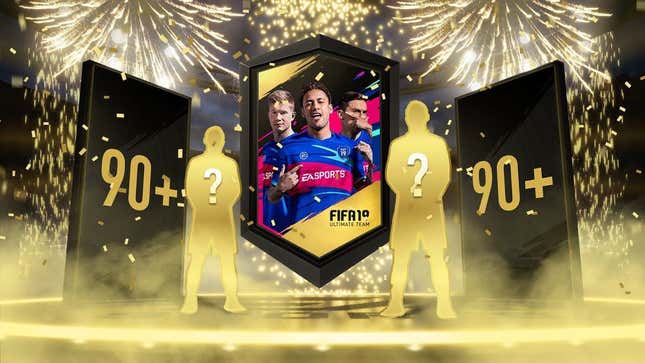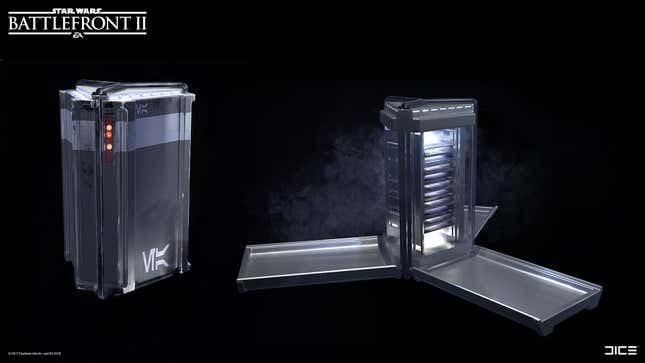
There once was a time—around when Bethesda had the idea to sell armour for a horse back in 2006—that the prospect of buying a video game then paying more money for stuff in the same game would prompt outrage.
When they first started showing up during the PS3/Xbox 360 years it felt like microtransactions and downloadable content were a fundamental threat to the way we bought and enjoyed video games, and if you spent any time on forums at the time you’d recall they were deeply unpopular moves. For those interested in keeping this kind of money-grubbing intrusion out of their games, this was, in many ways, the opening exchange in a war, something that had to be resisted at all costs.
Seven years of the PS4 and Xbox One era—which launched with in-game purchases already part of the landscape but still finding their feet—sure ground the life out of that fight.

In the late 2000s it used to be some of the biggest news of the year when a fighting game would offer some extra characters, or Call of Duty would try to sell you some new maps. Partly for the news itself, sure, but also for the accompanying unrest.
The arguments against this practice were sound: we’d already paid for this game, stop charging us more money for stuff! If you were making more stuff, just put it on the disc and give it to us all at once, like the good old days.
The arguments for this practice were...also sound, in that nobody was being forced to buy anything, a pipeline of additional content could keep a game active and relevant for years, and the extra revenue companies were raking in from microtransactions was contributing to game prices having stayed relatively stable for over a decade.
Now, in 2020, after we’ve just completed our first full console cycle with in-game purchases as standard, we’re numb to it. The NBA 2K series is now built around microtransactions at its heart, then some basketball is squeezed in around the edges, and while there are still loads of complaints every year, there are also millions of sales. Shooters will ship with some maps and game modes, then release more of them later, and get you on the hook for all of it up-front with season passes.
Then there are games like Rockstar’s two big releases (or re-releases) of the past console generation, Grand Theft Auto V and Red Dead Redemption 2, which were able to pivot entirely from being epic single-player adventures at launch to cash-hungry online playgrounds years down the line.
This stuff is a lot “worse” than a horse trying to protect itself, but the outrage, if it ever arrives at all these days, is rarely as pointed as it used to be, or is at least targeted towards specific missteps (more on that soon), not the practice itself. In 2020 microtransactions aren’t a threat, they’re just part of what video games are now. Prolonged exposure to the practice has dulled opposition, and the proliferation of mobile games and their free-to-play model has influenced publishers and developers across every platform, not just on phones.

What does this tell us? I don’t know! I think, though, that the practice has become so sharp, so plugged into the psychology of spending and feeling good, that it has become an irresistible revenue stream for companies who are in the business of making money, and that as companies get smarter about how elegantly they can implement these practices, the more successful they become. Even Nintendo, long opposed to ideas like microtransactions and F2P, now make mobile games and sell Smash Bros. DLC.
If you ever thought you were fighting a war against this stuff, you had already lost, because there was never a war in the first place. Protesting microtransaction’s creep into the fundamentals of game design wasn’t a fight, it was like standing on the beach and shouting at the tide. The gears of the market grind ever onward, an irresistible force.
A lot of this has been pretty terrible, and there has been backlash in some places, from FIFA’s loot boxes—currently being legislated to hell and back in Europe—to Battlefront II’s crates, which were so egregious that the publisher was forced to walk them back (but only a little). I’m listing two obvious examples here (both from the same publisher!) for the sake of brevity, but I’m sure you’d have no trouble naming your own worst offenders.
Yet there’s something to be said for games designed with later purchases in mind from the outset, and their immense popularity and commercial success. Resistance to the idea of in-game purchases is mostly based around the idea you’re being charged further for content that could/should have been in the main game (and original purchase), but games like Hitman—which offered up “episodes” like a TV show would sell seasonal box sets—showed there were ways to ask repeatedly for money and not come off like an asshole.
League of Legends is free to play, with most purchases being cosmetic items. Same goes for rival DOTA, and while Overwatch isn’t free, its in-game purchases are usually just skins. Fortnite, too, is free and follows a similar business model (albeit one that has lately made the game as much of an ad space as something you play), and those are four of the biggest games on the planet.
Genshin Impact is another game trying out new stuff in this field. Its “half-Zelda, half-F2P phone game nightmare” composition may not be as universally popular as Hitman’s, but it is at least trying to find new spaces with which to experiment. And then there’s the DLC of the past generation, once derided, but now in many cases refined and much more welcome. The Witcher 3's enormous additional quests could have been sequels, Bloodborne’s The Old Hunters was fantastic and the Destiny games have been radically changed with each expansion, just to name three (again, you can probably all come up with your own list of favourites).
The ever-changing nature of games like this are also evidence that microtransactions were never an intrusion on a codified pattern of game design in the first place. Their emergence was just the latest step in the video game business changing to reflect, for better or worse, the wider economy, its technological advances and its need for constant growth, just as store-bought console games had followed on from quarter-guzzling arcade cabinets.
As the era of the PS4 and Xbox One draws to an end, then, we’re left looking out over a gaming landscape where, thanks the dominant console games like FIFA, Battlefield and Call of Duty being built with additional payments at their core, the video game industry has changed dramatically, and much of the medium’s creative output along with it.
Microtransactions, DLC and F2P are no longer intrusions, or aberrations. They’re just the new normal.